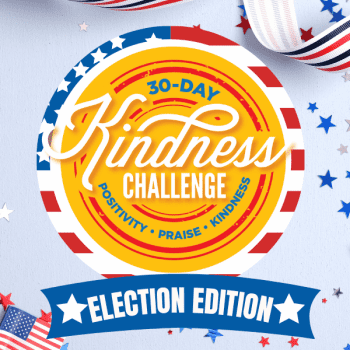Our big blind spot: We think we are a kind person.
Nearly all of us value kindness. We try to be kind to others. We teach our children to respond with grace to those who are mean. We try to not respond with rudeness when someone is rude to us. We are kind, right?
Well . . . um . . . not really. It turns out: Our big blind spot is that we are not nearly as kind as we think we are.
In my three-year research study for The Kindness Challenge, we discovered most of us have some serious “inattentional blindness” about how unkind we can be in our everyday life. It is sobering how often it happens . . . and how often we don’t even notice it.
Before the start of our experiment, we asked participants to estimate how often they praised a particular person, how often they were negative or unkind to or about them, and so on. They then spent 30 days doing a specific initiative called the 30-Day Kindness Challenge, including intentionally working to show no negativity toward that person—including how they spoke about that person to others. At the end, we asked the participant whether their initial guesses had been realistic or not.
The vast majority (95%) realized they had been way off! Within the first one or two days, most participants realized they had no idea how negative and unkind they were, until they weren’t allowed to be.
In the survey feedback, most participants said something like this woman: “This was a little humbling and very eye-opening. I had no idea how often I got exasperated, how much I corrected my husband, how bad my tone could be. How embarrassing. I’m SO GLAD for the chance to finally see that stuff, so I can get rid of it!”
I think it is time for all of us to “see that stuff” so we can get rid of it! Because when we are in the swirl of life and don’t realize that we are being unkind and negative to others, we are missing something that can easily wreck any daily relationship (with a spouse, child, someone we’re dating, colleague, in-law…), without us ever realizing it.
So how do we confront and overcome this particular blind spot? And what can we do instead? Take these three steps.













